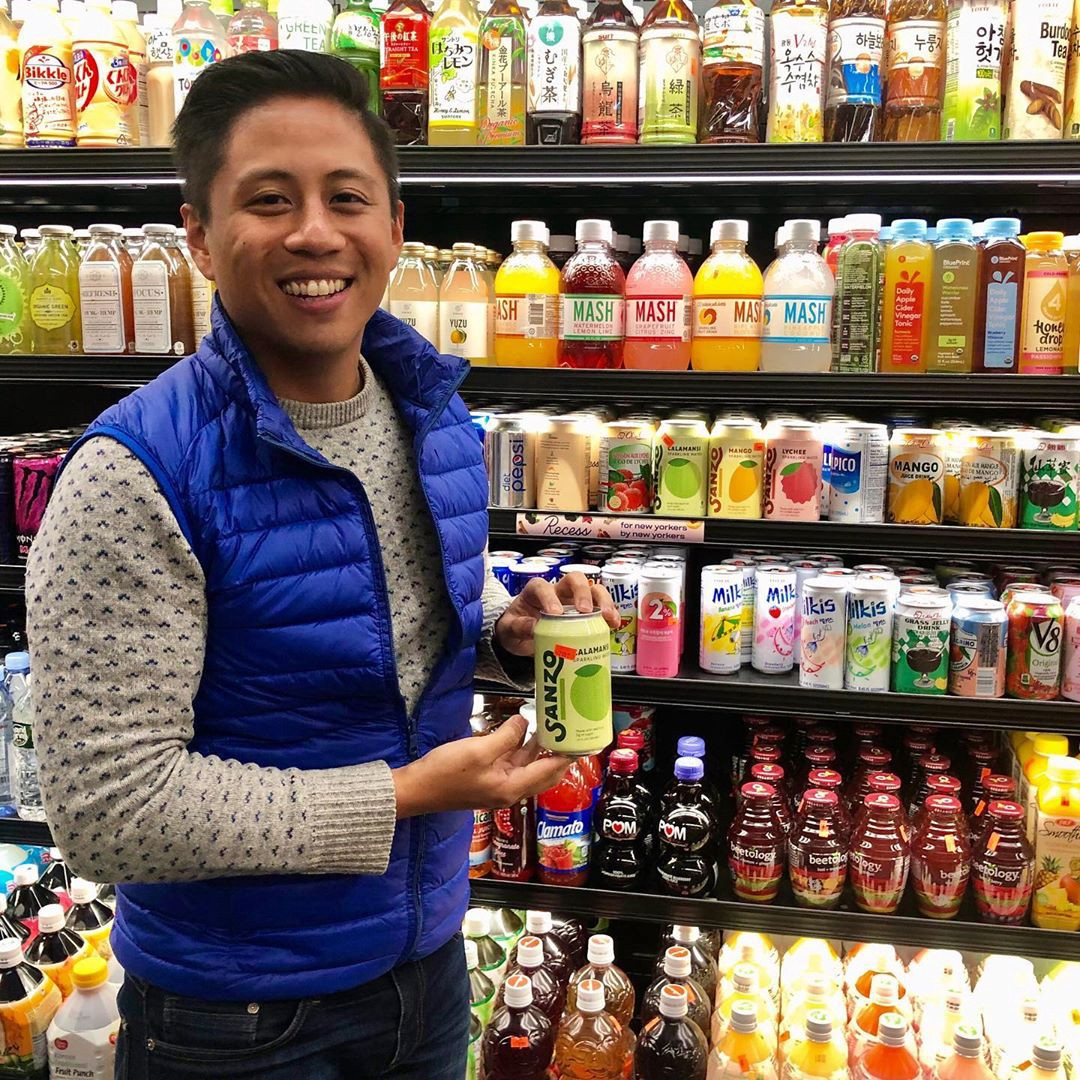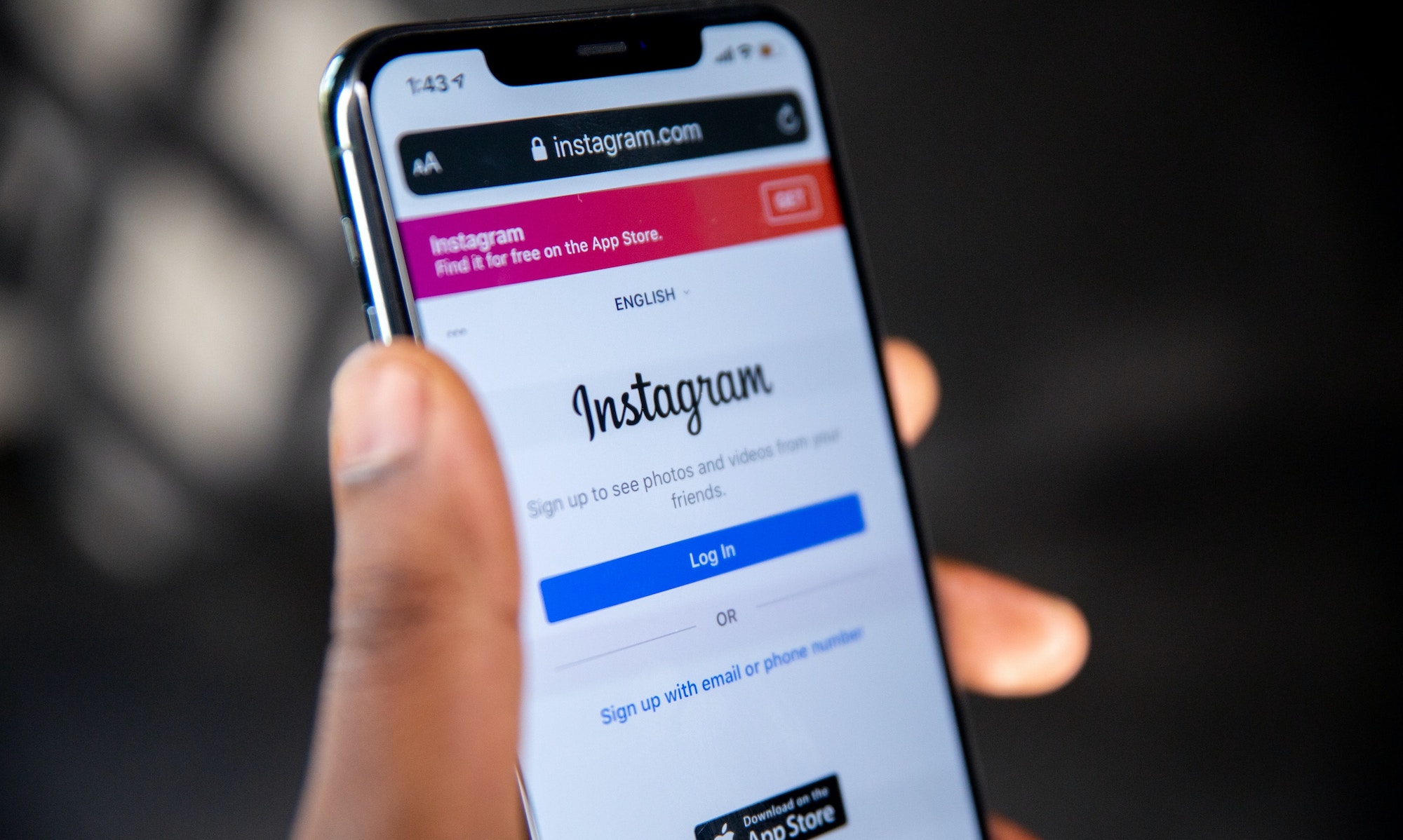Scaling during a pandemic, celebrating Asian culture, and partnering small by Sandro Roco of AAPI-founded beverage brand Sanzo

Listen to this article
I never would have imagined that I'd find a career that married the skill sets for being an engineer at a nuclear power plant, chief-of-staff at a personal styling startup, and a financier at a major U.S. investment bank.
But in founding my own beverage brand in 2019, I did.
The seemingly all-over-the-place skills I picked up throughout my early twenties proved valuable in this new venture–with my engineering background I knew how to communicate with beverage formulators and contract manufacturing partners, my knowledge of finance helped me understand how companies work on the business end, and my startup experience enabled me to understand how to build a company and the teams within it from the ground up.
And thus Sanzo, the first Asian-inspired sparkling water, using real fruit and no added sugar, was born.

I first thought up the concept for Sanzo in 2018, and Crazy Rich Asians was #1 at the box office. In many ways, the inspiration for Sanzo came from witnessing the omnipresent influence of Asian popular culture on a global scale, including the rise in popularity of Korean pop music, and the success of multiple blockbuster films directed by or starring Asians and Asian-American Pacific Islanders (AAPIs).
In contrast with this mainstream cultural representation, when walking through grocery store aisles, I noticed there were no modern Asian-made beverages. All of the beverages placed on the premium shelves were "American", while the brands with Asian flavors were placed on the bottom shelves of the "ethnic aisle."
There was a disconnect between the beverage industry and the culture at large–I wanted to connect those dots.
An unconventional route for Sanzo: partnering small
Despite my array of random skills, I still had a lot to learn about the Consumer Packaged Goods Industry (CPG), and one of the first decisions to make was how to start growing my brand.
While the go-to-market strategy for most food & beverage CPG brands is through grocery stores, I wasn’t sure that was the right move for Sanzo.
Going the route of marketing through grocery stores does open up opportunities to scale quickly, but it comes with risk and expense since there are a lot of food and beverage companies vying for placement on the same shelves. This results in brands offering stores costly promotional offers, and some major stores even charge slotting fees for product placement.

In thinking about the direction I wanted to take Sanzo, I was particularly intrigued and inspired by Oatly’s marketing approach, which diverged from the norm and was met with great success. Instead of partnering with grocery stores, they partnered with third-wave coffee shops, essentially making baristas their initial salesforce to customers who didn’t know anything about oat milk. Their growth, and the popularity of oat milk as a category in general, was exponential. Oat milk is everywhere now.
I decided to grow Sanzo similarly, partnering with premium Asian-inspired quick-service restaurants (QSRs), which proved to be an effective strategy, both because of the popularity of Asian-inspired concepts and because the pairing of Sanzo with that food helped drive awareness of our brand to people who wouldn’t have discovered it otherwise.
Additionally, the cross-marketing we were able to do with our partners’ social media channels allowed us new customer acquisition through engaged, authentic, and active promotional efforts.
Celebrating Asian heritage: bridging cultures with authentic flavors
My ultimate goal for Sanzo was to celebrate Asian flavors in the form of a modern, healthy, tasty sparkling water. Being a Queens-born Filipino American myself, it was a bridging of cultures on both an internal and external scale.
Sanzo brings the authentic flavors of lychee, mango, and calamansi (and more to come) to the forefront without the mask of added sugars, artificial flavors, or preservatives, which are quite common in the limited number of Asian-heritage brands sold in America.
And speaking of bridging cultures, nothing could have prepared me for Disney approaching us to partner up for their rollout of Raya and the Last Dragon.

The modern campaign Disney worked on with us in support of Raya was one of several partnerships they forged as a way to amplify small Asian-owned businesses and reflect the movie’s Southeast Asian roots. Disney was made aware of us through Bing Chen, the founder of Gold House, a collective whose goal is to foster community among AAPI creatives.
All I can say is when Disney approached us, I knew it was the opportunity of a lifetime.
A pandemic pivot to DTC
As soon as the pandemic hit, we lost the valuable QSR partnerships we’d been nursing and cultivating for less than a year, but not before they’d made a significant impact on our social presence and customer engagement.
This called for an unanticipated pivot to DTC for the brand. Luckily, because the business was so early on and we were a team of one at the time (just me), it didn’t destroy us, instead actually providing us with more long-term growth opportunities. Agility was imperative to enable that early growth, and our DTC efforts ended up generating enough buzz to ultimately fuel our retail expansion, as well as increase our business with initial retail partners Whole Foods and Erewhon.
We also found early success on Amazon despite only launching with them this past January. Depending on the day, we fall somewhere between number 15 and 25 on their site’s list of the most popular flavored sparkling waters.

Tips on breaking into the commerce world as a new brand
Growing a new food & beverage business during a pandemic is no small feat for anyone involved, and I owe it to my team for their maturity, steadfastness, and self-management throughout this time.
I’m relatively new to this world, but I have learned a few things along the way since coming up with the idea for Sanzo in 2018.
So without further ado, here are six takeaways from my last few years spent trying to figure out how to navigate this physical goods business:
My tips on what to keep in mind while developing a new brand (food, beverage, and beyond):
1. Be agile and flexible in business. Don’t expect your venture to necessarily go as planned. Mine certainly didn’t (you never know when a pandemic is going to hit).
2. Empathy is a requirement of leaders to manage and scale their teams effectively. Business is hard and times are difficult–you have to be kind and compassionate to the people you’re leading. Mutual respect and appreciation are a necessity.
3. Keep your team small initially. When starting out, surround yourself with a small team of thoughtful, principles-minded people whom you can turn to when it gets hard.
4. Learn about your industry, but don’t always go for the most common or typical move when it comes to scaling or marketing your brand unless it feels right. Notice what other key players in your industry are doing. Let their approaches inspire you as Oatly’s did for me.
5. Let inspiration and passion guide you. Identify what’s important to you and notice the cultural shifts around you that might point to that feeling being shared by others. For me, I wanted to highlight my heritage and share it with other people–Sanzo was the answer to that desire.
6. Pay attention to what’s lacking in the industry you’re most interested in breaking into. The way Sanzo fills the gap in the market of sugar-free Asian-inspired seltzer waters, you can identify and fill other gaps in product or service too.
Looking ahead: the future of Sanzo
DTC was such an unexpected turn for the brand, but it’s become a reliant and resilient avenue for Sanzo’s expansion. And we're excited that with growing retail distribution, Sanzo can have more of an omnichannel presence.

Until October 2020, I was Sanzo’s only employee, and now we’re operating as a team of five. As we're planning to be a team of almost ten by summertime, we're currently in the process of hiring. Last year Sanzo grew by 1100%, and since we’re likely looking at another year of exponential growth, I want to make sure I have a team in place to handle the expansion.
As our world hopefully turns the page on this pandemic,I know there are better moments ahead for all of us, and my vision is for Sanzo to be a part of them–to be a brand that sticks around, is celebrated across generations, and promotes healthy living. We’ve all experienced hard times this year, so I’m hopeful for a better year, one that brings joyful and memorable experiences as well as a continued investment and interest in the wellbeing of AAPI communities.















.jpg)







.jpg)
.jpg)
.jpg)
.png)



.png)
.jpeg)


























































.jpg)




















